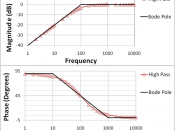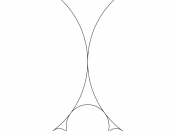CONVERTING A MIXED NUMBER TO AN IMPROPER FRACTION
Multiply the denominator of the fraction by the natural number and add the numerator to this product.
Place the result from step 1 over the denominator in the mixed number
3 4/5 = 5x3 + 4 5 = 15 + 4 = 19 5 5
CONVERTING AN IMPROPER FRACTION TO A MIXED NUMBER
Divide the denominator into the numerator. Record the quotient (the result of the division) and the remainder.
Write the mixed number using the following form:
Quotient remainder original denominator
42 5)42 5 40 = 8 2/5 2
PRIME NUMBERS
A prime number is a natural number greater than 1 that has only itself and 1 as a factor
The first ten prime numbers are: 2, 3, 5, 7, 13, 17,19, 23 and 29
COMPOSITE NUMBERS
A composite number is a natural number greater than 1 that is not a prime number which can be expressed as the product of prime numbers.
FUNDAMENTAL PRINCIPLE OF FRACTIONS
In words: The value of a fraction does not change if the numerator and denominator are divided (or multiplied) by the same non zero number.
In algebraic language: if a/b is a fraction and c is a nonzero number, then
axc = a
bxc = b
REDUCING A FRACTION TO ITS LOWEST TERMS
Write the prime factorization of the numerator and the denominator.
Divide the numerator and the denominator by the greatest common factor, the product of all factors common to both.


